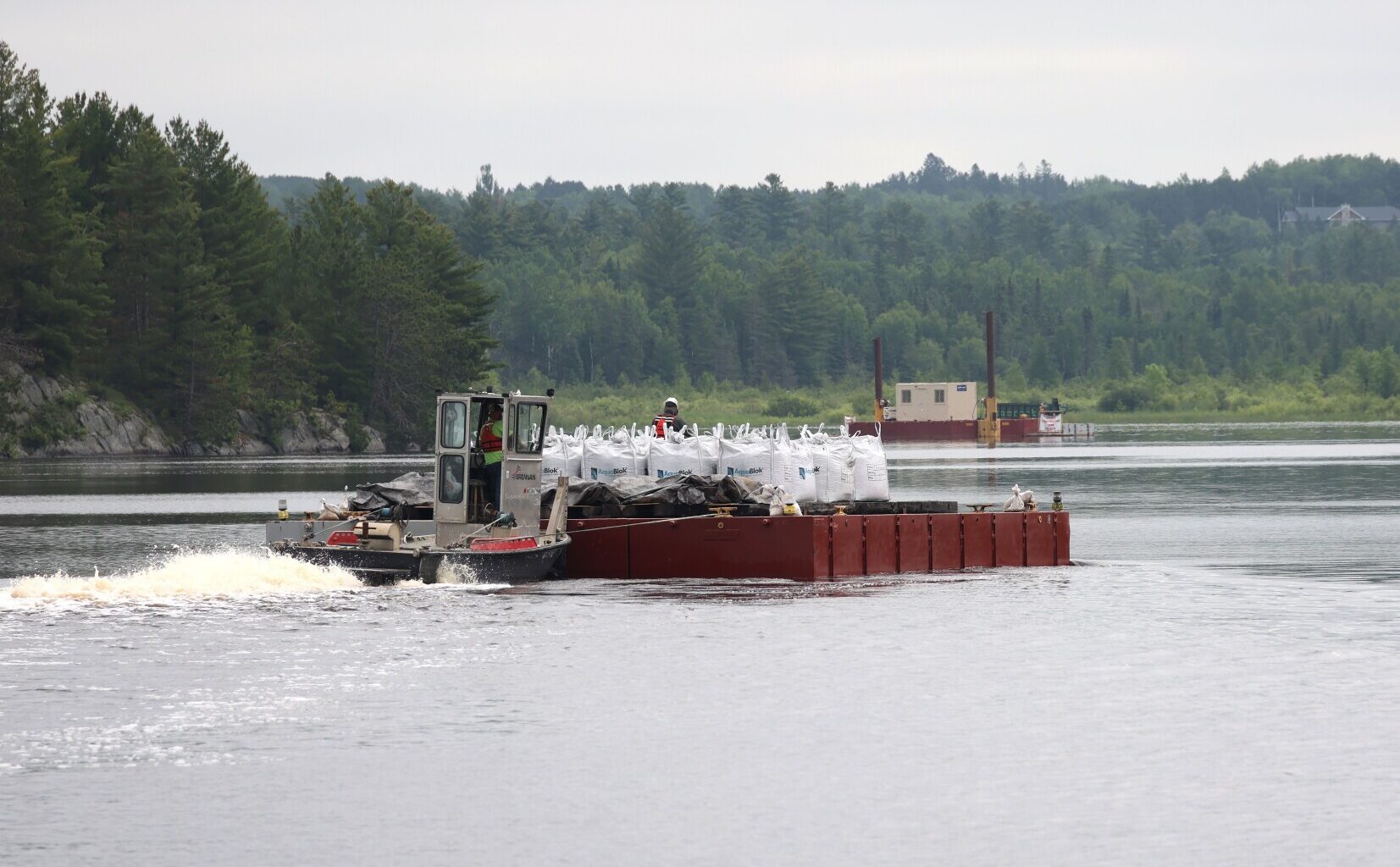CARLTON — The world’s biggest environmental cleanup of its kind has resumed on the Thomson Reservoir as federal and state agencies seek to remediate industrial pollutants along Lake Superior’s largest river.
Environmental Protection Agency contractors resumed the deployment of 8,100 tons of activated carbon used to remediate toxins in the second phase of the $36 million project in June. Once completed, it will be Minnesota’s final planned remediation project on the St. Louis River.
“From a broader perspective, the more of these immediate projects that we complete to remove contamination left behind from historic industrial discharges, the huge benefit it’ll be overall to the Great Lakes,” said Meaghan Kern, technical lead and project manager with the EPA.
St. Louis River is listed as a
a designation the EPA applies to areas impacted by human-caused environmental degradation in the Great Lakes basin. Encompassing 1,020 square miles, it is the second-largest and westernmost of the country’s 25 remaining Areas of Concern. The reservoir remediation is part of the larger effort to restore and delist the St. Louis River as an Area of Concern by 2030.
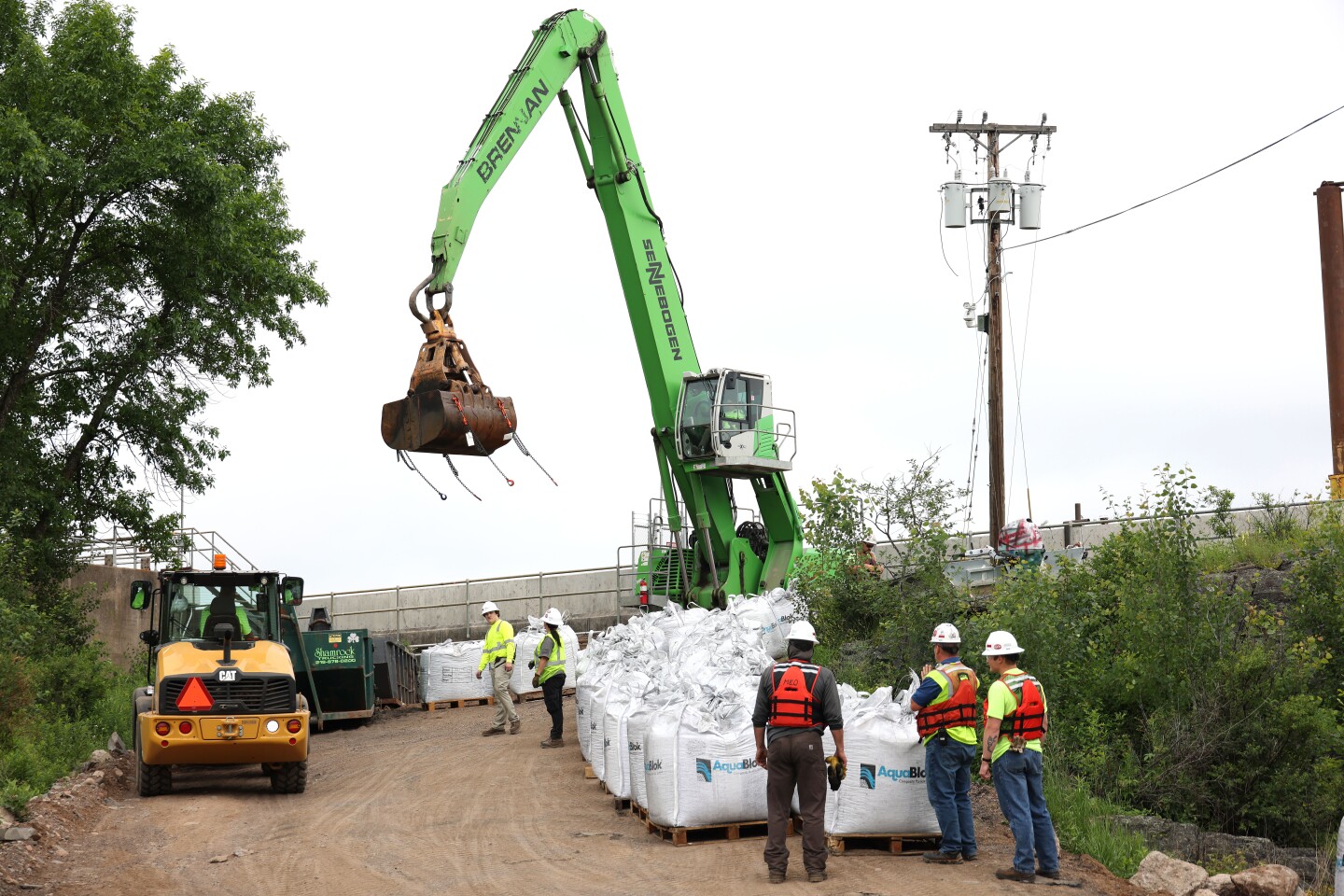
Contract workers for the Minnesota Pollution Control Agency and Environmental Protection Agency transport large bags of carbon pellets to the Thomson Reservoir on Tuesday, July 8.
Wyatt Buckner / Duluth Media Group
The river’s pollution is a legacy of industries that have historically used its waterways. At Thomson Reservoir, residual dioxins and furans — highly toxic chemicals known to cause cancer and reproductive and developmental problems, left behind by pulp and paper manufacturing — litter the bed of the reservoir.
The toxins are mainly consumed by bugs and plants on the sediment surface and move up the food chain by concentrating in the fatty tissue of animals.
that over 90% of human exposure to dioxins occurs through the consumption of animal fats, such as meat, dairy, fish and shellfish.
To isolate the toxins, a thin layer of activated carbon pellets is being applied to the sediment bed. The pellets, which are gravel-coated with powdered carbon, sink carbon to the sediment surface. The carbon should then separate and bind to the contaminants, preventing accumulation in bottom-dwelling organisms, halting their journey to the top of the food chain.
“Our targets here really are those bugs and the fish. So we’re looking at the chemistry and those contaminants, and how they move through the food chain,” said LaRae Lehto, a contaminated sediment program coordinator for the Minnesota Pollution Control Agency, which is working alongside the EPA to remediate the river.
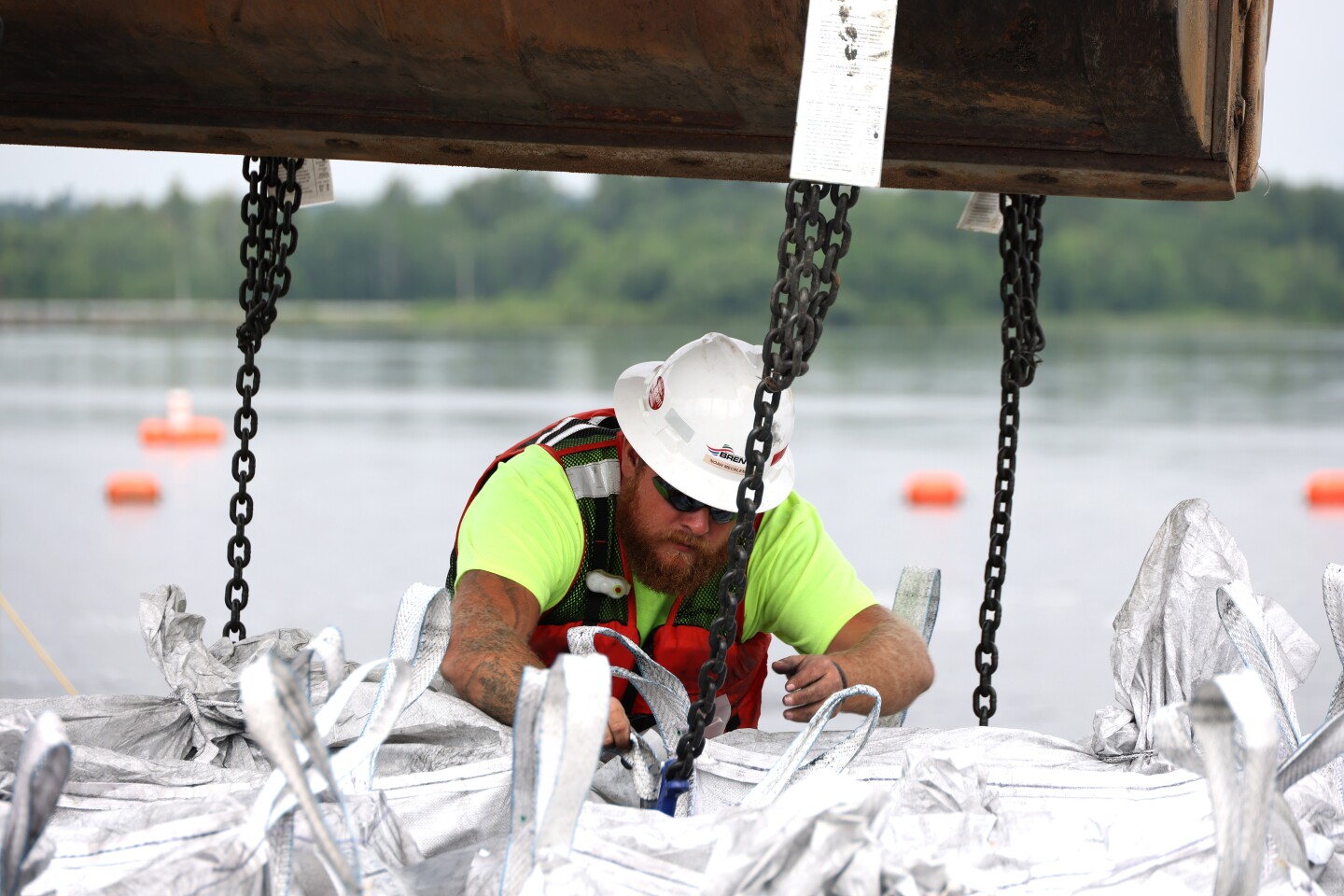
Noah Mecklenburg disconnects chains from a bag of carbon pellets.
Wyatt Buckner / Duluth Media Group
The EPA completed approximately 42% of the total activated carbon placement over 28 acres in 2024. The remainder will be dispersed across 38 acres through the summer. The project is expected to be completed by November.
The project is largely funded through the EPA’s Great Lakes National Program Office, with the MPCA and
the former owner of the
in Cloquet, splitting just over one-third of the remaining costs.
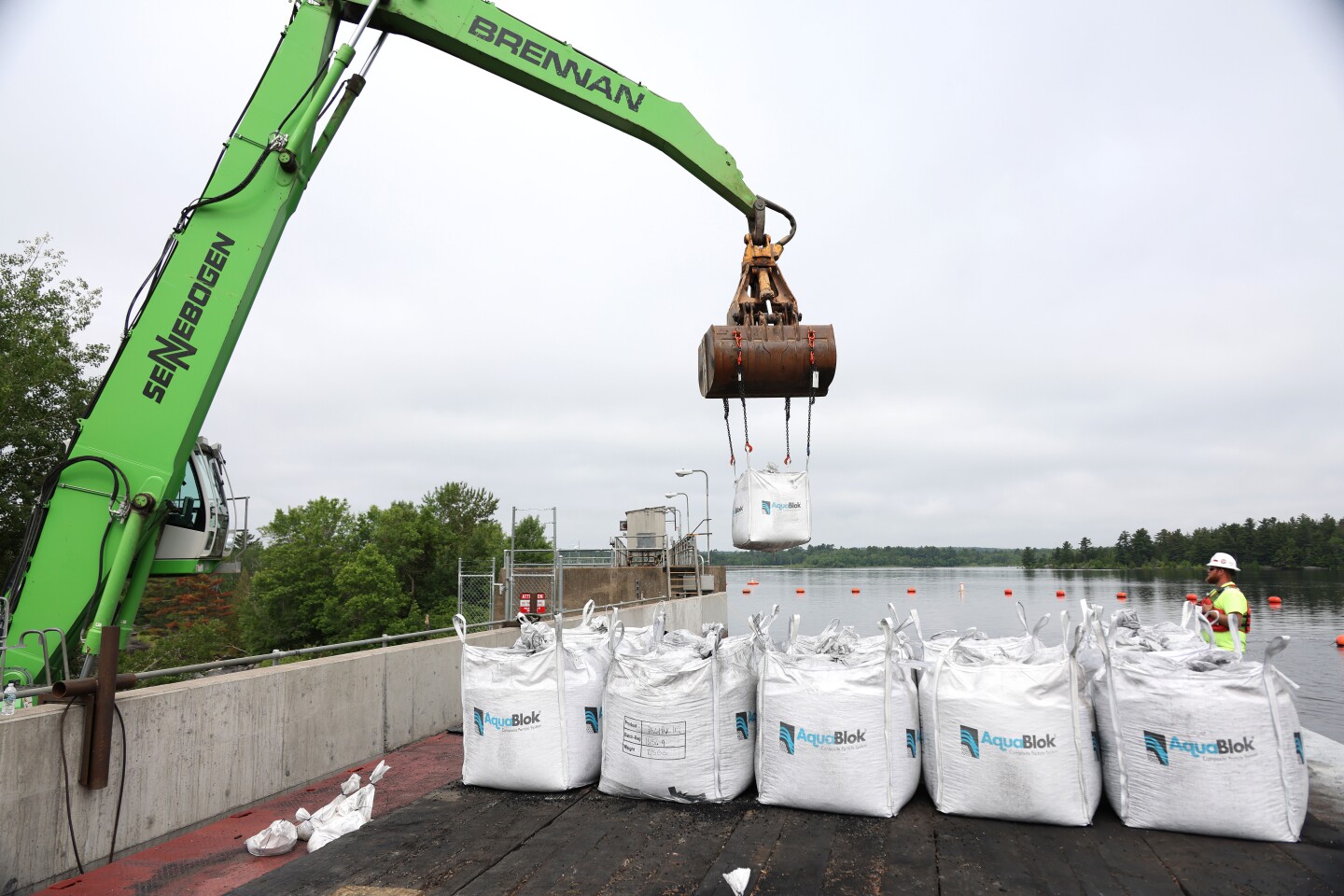
An excavator is used to lift a bag of carbon pellets to a barge with other bags on the Thomson Reservoir.
Wyatt Buckner / Duluth Media Group
The
from the 2021 Bipartisan Infrastructure Law, which allocated $1 billion to accelerate the cleanup and restoration of the Great Lakes.
Kris Eilers, executive director of the St. Louis River Alliance, an advocacy organization that helped secure state funding for the project in 2017, said the environmental impacts from the remediation are already being seen.
“It’s been great for the river,” Eilers said. “We’re already seeing recovery in the river in different areas over the last 10 years, and so we expect that we’ll see the same up at the reservoirs.”
This is Minnesota’s seventh and final remediation of the St. Louis River. Following a select few
remediation projects in Wisconsin,
the EPA is on track to meet its target of delisting the St. Louis River by the end of the decade.
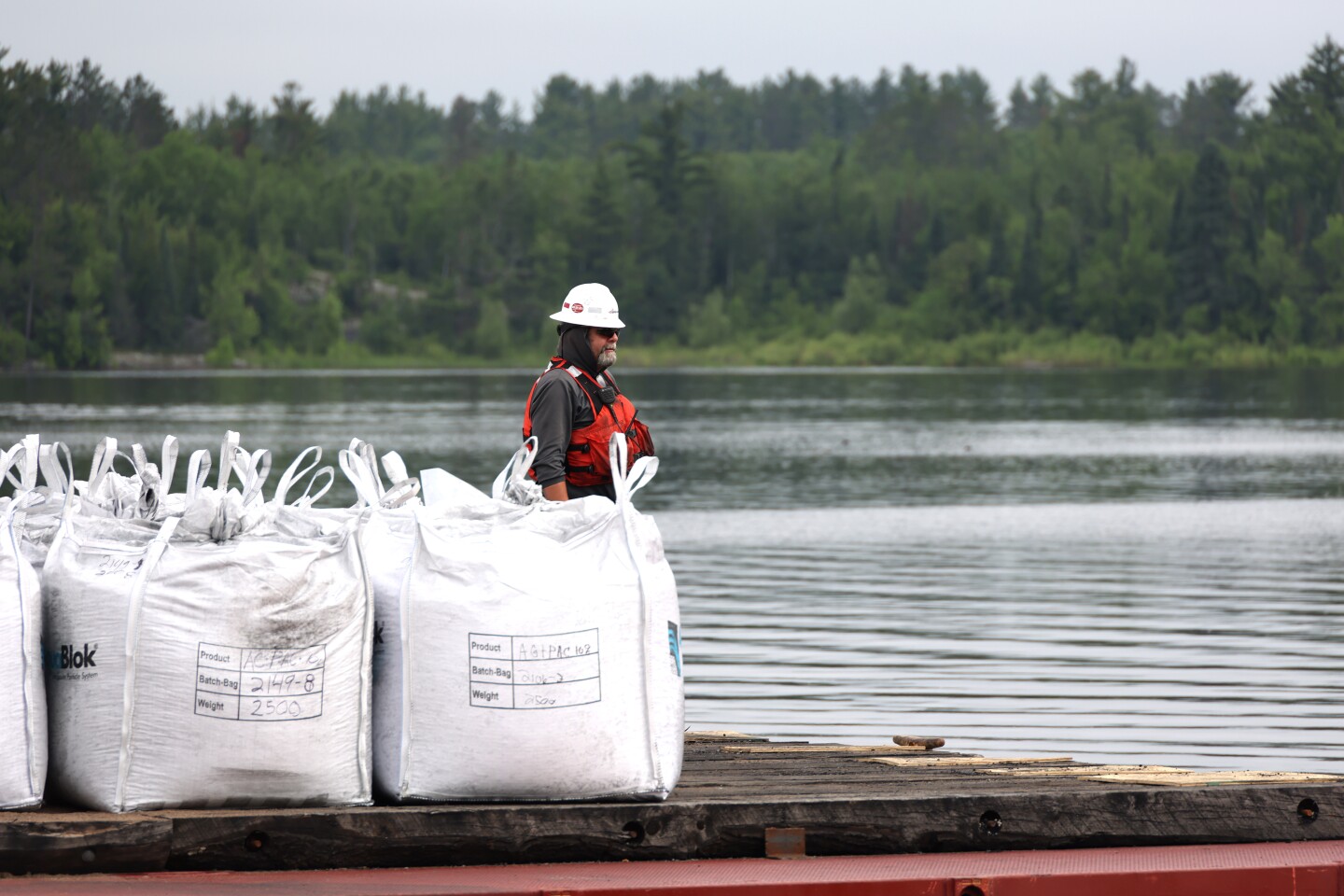
Mitch Ojard stands on a barge transporting several large bags of carbon pellets along the Thomson Reservoir.
Wyatt Buckner / Duluth Media Group
Because the project was operational and fully funded in 2024, it has not been impacted by calls by the Trump Administration to
cut EPA funding and loosen environmental regulations,
according to Lehto.
Still, Eilers worries that future cuts in funding and the environmental regulatory rollback could jeopardize all the progress made in cleaning the river.
“If they want to roll back regulations and stuff, the reason why we got here in the beginning was because there were no regulations,” Eilers said. “So there needs to be regulations and standards for our water if we want a healthy future.”

Macklin Caruso is a reporter for the Cloquet Pine Journal. You can reach him at mcaruso@pinejournal.com or 218-461-8278.
